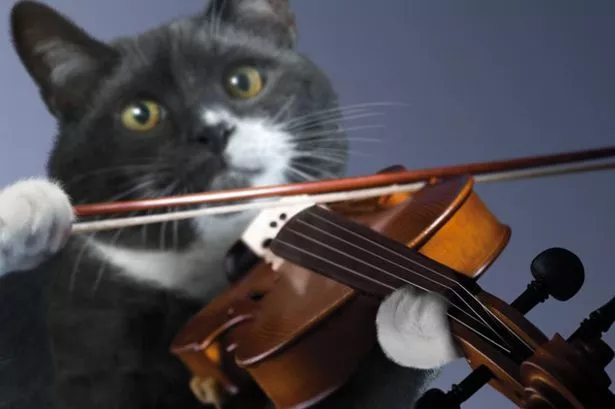Welcome to our forum. A Message To Our New and Prospective Members . Check out our Forum Rules. Lets keep this forum an enjoyable place to visit.
Currently working on errors from the latest (SimplePress) forum update. Many issues have been resoled and others are being worked on. Thank you for your patience.
 Topic RSS
Topic RSS



 (43 votes)
(43 votes) Regulars
 Offline
Offline








Regulars
 Offline
Offline








Regulars
 Offline
Offline








Regulars
 Offline
Offline








Regulars
 Offline
Offline








 I just wanted to cross reference some threads here - just for fun!
I just wanted to cross reference some threads here - just for fun!
From "Cape Breton Strathsbeys and Reels" thread, this was originally written as a Strathsbey by Paul Cranford, "The Open Door" - cross tuned AEAE.
From "Anyone Interested in a Scandinavian Fiddle Genre?" thread, typical Swedish and Norwegian "Fiddle" tunings.
Keep an eye out for Cross Tuning in all Genres! Isn't there even some "Classical" music written with violins that were cross tuned?
 - Emily
- Emily
Regulars
 Offline
Offline








Here's a link to some info on tunings and the popular tunes that use them!
Just type in "Cross Tuning" in search.
The Fiddle Hangout

A BUNCH of info there!
- Emily
Regulars







ELCB said
Keep an eye out for Cross Tuning in all Genres! Isn't there even some "Classical" music written with violins that were cross tuned?
The most famous piece might be Danse Macabre by Saint-Saens. The E string is tuned to E-flat to allow a tritone double stop on open strings. Also, Biber's Rosary Sonatas use all kinds of scordatura tunings.
I'm not that familiar with scordatura in violin parts, but I know of some famous scordatura pieces or passages for viola and cello.
Bach, Cello Suite No. 5 -- uses CGDG tuning.
Richard Strauss, Don Quixote -- One of the principal viola solos requires tuning the C string down to B; some orchestral principal violists have a C string fine tuner just for this solo, because they need to tune the string down and then back up while the orchestra is playing and the fine tuner allows them to remember the number of turns it takes to tune down and back up.
Schumann, Piano Quartet -- The cello C string is tuned down to B-flat for the end of the third movement.
Mozart, Sinfonia Concertante for Violin and Viola -- As originally written, the solo viola was tuned a half-step higher so that the violist would finger the notes in D major to sound in E-flat major, and sympathetic resonance would help the viola project better. However, most violists use normal tuning today and play in E-flat major. I find it slightly easier to play in normal tuning.
Regulars
 Offline
Offline








@Fiddlerman -
I had thought along those lines even before your post.
![]() How could you NOT be messed up if you know where your fingers are supposed to go when you hear/perceive to hear (in your head) the notes - and suddenly everything's changed around?
How could you NOT be messed up if you know where your fingers are supposed to go when you hear/perceive to hear (in your head) the notes - and suddenly everything's changed around?
So, is it REALLY that difficult?
- It can't be! There are WAY too many fiddlers who play folk music in different tunings (scordatura) - not just a freaky few prodigies.
- Folk songs are memorized & played repeatedly, year after year... after year. Once a tune is memorized and reinforced in this way, I'm not so sure it really matters what ANY of the strings are - as long as everyone you play with does the same!
- Some scordatura are not a far stretch to understand if we think it normal to play in different "positions" with "interval" patterns. These tunings would just move all the strings up/down an interval (or 2) in unison.
- More emphasis on memorizing song-specific finger patterns and groupings or "blocks" of patterns would make learning easier.
- A "Block" - group of songs/tunes with similar finger patterns - all played in the same key/same tuning.
- Example: "Block A" would be "Songs A Type" - related tunes all in key of A dorian, possibly different rhythms but all learned/memorized in "Tuning #1" (best chosen tuning to help play "A" tunes). "Block B" might be tunes in Dm with a different tuning to best play them with, etc...
- Scordatura seem designed to make it physically easier to play FAST tunes for extended periods.
- Since most traditional folk music is "dance" music, it makes sense to me that many similar tunes would be learned together to easily play for a lengthy time. A long time to dance - who wouldn't want that?
- Seems ANY way this, somewhat repetitive, music could be made physically less taxing on a player - would be a Godsend!
- Example: an Open string tuning could mean more dronings available or moving a droning string closer for convenience.
- Example: a Cross tuning would make it easiest to play the same 2-string tune finger pattern next door, down 1 octave - instead of in another key.
- Other motivation for scordatura - more open strings used in a song also means more projection and better sounding pizzicato - before instruments were amplified electrically.
Different tunings on different fiddles?
"MAKING PLAYING EASIER" seems to be the key motivating factor for scordatura in folk music!
NOW... WHY DID MOZART DO IT?
Sorry @AndrewH - didn't see your post in time. I really appreciate all that info.
Hard to believe composers would go to all the trouble to use scordatura for just parts of a Classical piece! Seems like diminished returns... or, did Classical composers do it just to show it could be done?

- Emily
...my brain just exploded.
I considered the term "Sets" in here, but "Set" tunes aren't always chosen for the same key or even have the same rhythm.
Regulars
 Offline
Offline






@ELCBK one of the more active old time youtubers will also detune the A from 440 to to 415 sometimes. he said he feels it makes his fiddle sound less shrill in tunings like AEAe and such. of course the other instruments would need to follow suit. not ideal in a jam but a duet wouldnt be that big of deal.
Regulars
 Offline
Offline








*Edit Note: since the time of these posts, I've learned that A=415 Hz is 'Baroque' tuning and equal to tuning down all the strings a half step/tone! ...and sounds GREAT!
@ABitRusty - Thanx!
That's really quite interesting!
I remember reading/hearing about "Flat" or "Flatted" tuning, where I thought all the strings were flatted, but I hadn't heard of altering the frequency of just one string.
Unfortunately, I can't remember if I heard about it somewhere in Cajun music, in the Cross Tuning history video (1st post here) or maybe in the thread about influences on Old Time music (crammed too much info into my brain, lately).

...why aren't my cats this talented?
- Emily
Regulars







ELCB said
Hard to believe composers would go to all the trouble to use scordatura for just parts of a Classical piece! Seems like diminished returns... or, did Classical composers do it just to show it could be done?
Sorry about the very delayed response, I just noticed this.
It's probably because it would be awkward to stay in scordatura for the entirety of a 30-40 minute piece when it's only needed for a short time. Orchestral music and chamber music were mostly written to be played from sheet music after very limited rehearsal time, so there isn't time to practice and get used to reading in scordatura for the entire piece. Note that both of the examples of brief scordatura passages involve tuning the lowest string down so that the instruments can play below the bottom of their normal range. Once those notes aren't needed, it is easier for the player to read the music in normal tuning.
Regulars
 Offline
Offline








Regulars
 Offline
Offline








Mardi Gras is only a week away, with similar festivals around the World and I found a few Cajun tunes specifically for Mardi Gras!
Mitch Reed describes and plays these tuned down in "Cajun Tuning", all strings 1 whole step down - from EADG to DGCF. Check out all of Mitch Reed's tunes & tips on YouTube.
I want to give them a try - pretty cool!

- Emily
Regulars
 Offline
Offline








Regulars
 Offline
Offline






alriggt Emily @elcbk..if you keep dabbling in these cross tunings youre gonna be sawin into a gum stump and disturbing a possum...juat sayin..please be careful.. 😉😁😂
😉😁😂
i havent attempted any cajun. i guess the closest sounding would be the quebecois on fiddevideo...or some of the old time stuff. i like it.though.
Regulars
 Offline
Offline








Regulars
 Offline
Offline






Regulars
 Offline
Offline








@ABitRusty -
I really don't need to get myself sidetracked even more (I want to learn 1 of these Mardi Gras tunes), but...
Know any good tunes, with altered tuning, about Raccoons?
Would be great to learn right now - think one ripped off half of 1 of our eave vents the other night. Glad it found out it couldn't go anywhere... or maybe it left just because Kevin banged on the wall. (lol)

- Emily
1 Guest(s)


 Log In
Log In Register
Register








 - Emily
- Emily Here's a cross-tuned "Devil's Tune" - originally Norwegian, but this version has an "Old Time" twist!
Here's a cross-tuned "Devil's Tune" - originally Norwegian, but this version has an "Old Time" twist! - Emily
- Emily - Emily
- Emily












 Online
Online


